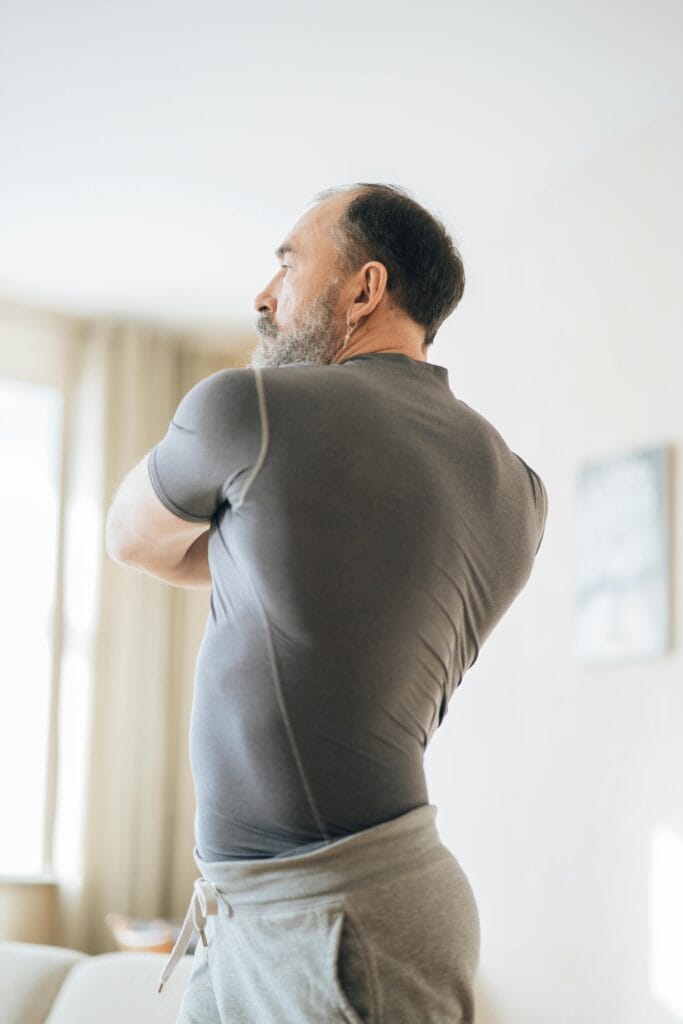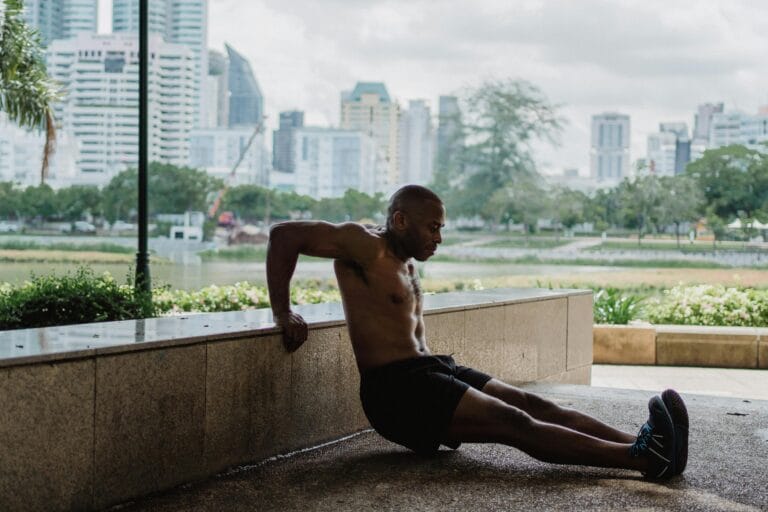FREE SHIPPING OVER $50
3 Years of Back Pain Gone in 2 Weeks—Thanks to This Surprising Exercise

For three years, I lived with a constant, nagging ache in my lower back. It wasn’t a sharp, debilitating pain every moment, but it was always there—a dull, persistent throb that made simple things like getting out of bed, bending over to tie my shoes, or even sitting at my desk for too long feel like a chore. I tried everything. I spent a small fortune on massages, visited chiropractors, and did all the stretches I could find online. Nothing seemed to provide lasting relief. I felt like I was in a hopeless, never-ending battle with my own body, resigned to a life of chronic discomfort.
Then, everything changed. In a last-ditch effort, I stumbled upon a piece of advice from a physical therapist that seemed almost too simple to be true. He recommended a single exercise. Skeptical but desperate, I decided to give it a try. I committed to doing it every single day. Within the first week, I felt a noticeable difference. After two weeks, the persistent back pain I had lived with for three years was gone. Not just diminished—it was gone.
The Root of the Problem: Why Most Back Pain Treatments Fail
Before we get to the solution, we need to understand the real cause of most lower back pain. The majority of chronic, non-specific back pain isn’t caused by a major injury or a slipped disc. It’s often the result of weak, imbalanced, and uncoordinated muscles.
Think about how most of us spend our days: sitting. We sit in cars, at our desks, and on the couch. This sedentary lifestyle leads to a few key problems:
- Weak Core Muscles: Our core muscles, particularly the deep stabilizers of the spine, go dormant. These muscles are supposed to be our body’s natural “back brace,” but when they are weak, the burden of stability falls on the muscles in the lower back, which become overworked and tight.
- Tight Hips and Weak Glutes: When we sit all day, our hip flexors become tight, and our glutes—some of the most powerful muscles in the body—become weak and “turned off.” This imbalance forces the lower back to overcompensate, putting it under constant, unnecessary strain.
- Poor Posture: Over time, our posture slumps, putting our spine in a compromised position and leading to muscle fatigue and pain.
Many common solutions, like stretching and massage, focus on treating the symptoms of this imbalance—the tight, sore muscles. But they don’t address the root cause, which is a fundamental lack of core strength and stability. To truly fix back pain, you have to rebuild your body’s foundation.
The Surprising Exercise That Changed Everything
The exercise that finally provided me with lasting back pain relief is called the Bird-Dog. It’s so simple, you might be tempted to dismiss it, but its effectiveness lies in its ability to simultaneously target and strengthen the key muscles that support your spine.
What is the Bird-Dog?
The Bird-Dog is a foundational core stabilization exercise that you perform on your hands and knees.
- How to Do It:
- Start on your hands and knees with your hands directly under your shoulders and your knees directly under your hips. Your back should be flat and straight, like a tabletop.
- Engage your core muscles by pulling your belly button up towards your spine. This is the most crucial step. You want to keep your back completely still throughout the movement.
- Slowly extend one arm straight out in front of you while simultaneously extending the opposite leg straight out behind you. Your arm, torso, and leg should form a straight line, parallel to the floor.
- Hold this position for a moment, focusing on balance and stability.
- Slowly return to the starting position and repeat on the other side.
- Why it’s so powerful: The Bird-Dog trains your deep core muscles to fire correctly, teaching them to stabilize your spine as your limbs move. It also directly strengthens your glutes and the muscles of your upper and lower back, all without putting any compressive force or strain on your spine. It’s a complete package for building functional back strength.
My 2-Week Back Pain Protocol: A Step-by-Step Guide
The key to my success wasn’t just doing the exercise, but doing it consistently and with the correct form. I created a simple protocol that I stuck to every single day for two weeks.
Week 1: Focus on Form and Stability
During the first week, my goal was not to do as many reps as possible, but to perfect the movement.
- Daily Routine: I did 3 sets of 5 repetitions per side. I performed each rep slowly and deliberately.
- My Focus: I paid close attention to keeping my core engaged and my hips level. I imagined a glass of water on my lower back and tried not to let it spill. My mantra was “control, not speed.” I found that by focusing on this, I was working muscles I hadn’t used in years.
Week 2: Build Endurance and Strength
By the start of the second week, I felt more stable and confident in the movement. Now, I began to increase the duration and repetitions.
- Daily Routine: I increased my routine to 3 sets of 8-10 repetitions per side. I also started holding the extended position for 5-10 seconds on each rep.
- My Focus: This progression helped build the endurance of my stabilizing muscles. The feeling of stability in my core was undeniable, and the dull ache in my lower back had already started to fade.
By the end of the two weeks, my back pain was gone. I continued to do the exercise every day for a few more weeks to solidify the results, and it has since become a regular part of my fitness routine to prevent the pain from ever returning.
The Holistic Approach to Back Health
While the Bird-Dog was the single most important part of my recovery, it works best as part of a more holistic approach to back health.
- Don’t Forget Your Posture: Pay attention to how you sit and stand throughout the day. Try to avoid slouching and keep your ears, shoulders, and hips aligned. I started using a lumbar support cushion in my office chair, which helped me maintain a good position while sitting.
- Movement is Medicine: When you have back pain, the last thing you want to do is move, but inactivity can actually make things worse. I started taking a short walk every day to keep my spine mobile and get blood flowing to my muscles. Gentle movement is a powerful tool for back pain relief.
- Don’t Skip the Stretches: While stretching won’t cure the problem, it still has a place in your routine. Tight hip flexors and hamstrings can pull on your pelvis, contributing to lower back pain. A gentle hip flexor stretch and hamstring stretch after your workouts can help relieve some of that tension.
A Simple Solution to a Complex Problem
For three years, I believed that my chronic back pain was an unsolvable problem. I tried to stretch my way out of it, massage my way out of it, and pay my way out of it. It wasn’t until I stopped treating the symptom and started building a stronger foundation that I found lasting relief. The Bird-Dog exercise, a simple and consistent practice, was the key.
This isn’t just my story; it’s a testament to the power of functional fitness and smart, foundational movements. The secret to a pain-free back isn’t hidden in an expensive clinic—it’s in a few square feet of floor space and a consistent, disciplined effort. If you are struggling with back pain, I urge you to try this simple, powerful exercise. It might just be the one thing that changes everything for you, too.
Related Articles
- Why These Baby Boomers Are More Ripped Than Gen Z—Their Anti-Aging Routine Will Blow Your Mind
- Doctor Shocked: The Simple Routine That Helped This 65-Year-Old Throw Away Her Cane
- The Doctor’s Secret: I Was 67, in Pain, and Ready to Quit… Then I Found These 15 Light Exercises
- No Heavy Weights Needed! A Physical Therapist’s Top 5 Pilates Moves for Glute Transformation
- Build Lean Muscle After 40: These 8 Workouts Are Your Secret Weapon Against Aging



